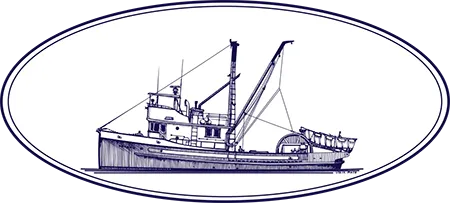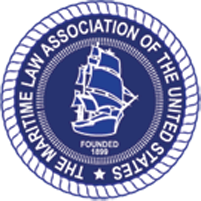Jones Act Lawyers
The Jones Act is federal legislation that regulates maritime commerce. One of the provisions of the law gives those who regularly face the perils of the sea—seamen, such as merchant mariners, commercial fishermen, and tug boaters—a right to sue their employers in tort for injuries sustained in the course of their employment.
Unlike land-based workers, who are covered by state workers’ compensation for on-the-job injuries, many maritime workers are protected by the Jones Act. Typically, a vessel’s crew and officers are Jones Act seamen. If you work on a vessel and have been injured due to the negligence of another, the Jones Act might apply to you. You should seek compensation for your injuries by contacting an experienced Washington, Oregon, or California maritime injury attorney.
If you were injured while working in the service of a vessel, contact the Jones Act lawyers of Anderson Carey Williams & Neidzwski, LLP today. Our attorneys can help you determine whether you are entitled to compensation under the Jones Act. If you’ve suffered an injury that was due to an action or omission by your employer or coworker, you may have a claim for recovery of monetary compensation.
When it comes to lawsuits under the Jones Act, our attorneys represent injured seamen in state and federal courts from coast to coast and across the Pacific Northwest, including Washington, Oregon, Seattle, Alaska and California. Contact the attorneys at Anderson Carey Williams & Neidzwski, LLP to find out how much your claim might be worth and to learn more about comparable Jones Act settlements and verdicts across Washington, Oregon, Alaska, and California.
Call 1 (800) 262-8529 or send an online message to schedule a free consultation to discuss your claim.
Information Center on the Jones Act
- Who Counts as a Seaman?
- Jones Act Offers Protection to Seamen
- Jones Act Employers’ High Duty of Care Owed to Seamen
- Types of Accidents Covered under Jones Act
- Eligibility for Jones Act Protections: Seaman Status
- What Seamen Can Recover Under the Jones Act: Monetary Damages
- Damages and Benefits Under the Jones Act
- Negligence Under the Jones Act
- Application to Cruise Ships
- Additional Resources
Who Counts as A Seaman?
The term seaman encompasses many different types of of maritime workers who owe their allegiance to a vessel, including, but not limited to, the following professionals:
- Fishermen
- Deckhands
- Divers
- Captains
- Mates
- Engineers
- Stewards
- Cooks
- Able Bodied Seamen
- Ordinary Seamen
- Drillers
To be protected by the Jones Act, a worker’s primary job function must take him to sea (or inland waterways) on a vessel.. Additionally, a boat that is being repaired still counts as a vessel that is “in navigation” because it is docked but generally still in the water and capable of navigation.
Jones Act Offers Protection to Seamen
The Merchant Marine Act of 1920, commonly called the Jones Act after its sponsor Washington Senator Wesley Jones, regulates maritime commerce in this country. The Jones Act legislatively overruled prior Supreme Court precedent—The Osceola—that prevented seamen from recovering for injuries caused by officers or crew. Congress determined seamen should have this right because of their exposure to the “perils of the sea.”
For on-the-job injuries, the rights of seamen are superior to those of land-based workers and even other maritime workers, like longshoremen. The Jones Act gives seamen who suffer injury or are killed during their employment the right to seek justice through civil courts. Unlike most workers, they have the right to sue their employer in tort and have a jury trial.
Congress borrowed language from the Federal Employers Liability Act when drafting the Jones Act. Thus, Congress gave seamen the same causes of action that had been available to railroad workers, including the right to sue their employers for personal injury and wrongful death in a negligence claim.
Jones Act Employers’ High Duty of Care Owed to Seamen
Jones Act employers owe a high duty of care to their employees. The Jones Act imposes liability upon maritime employers for injury to a crew member when the evidence demonstrates that the employer’s negligence played any part, even the slightest, in producing the injury for which damages are sought.
The employer’s high duty of care includes an obligation to provide the crew a safe working environment and safe work methods. A failure to do so gives rise to liability under the Jones Act.
Washington, Oregon, California and Alaska maritime employers must act in accordance with industry standards and regulations, which are designed to protect workers employed in dangerous maritime commerce.
Failure to uphold the duty of care or, in other words, a breach of the duty of care, is called “negligence” under the general maritime law. Negligence includes both actions and omissions.
The sea is a dangerous place to work. Thus, it is an employer’s obligation to ensure that precautions are in place and procedures are properly executed to reduce those risks. For instance, if a deck becomes slippery after a crane leaks hydraulic fluid and there has been a reasonable time to mop it up, and you fall and have an injury, you may have a Jones Act claim against your employer in Seattle or Portland. On the other hand, if the deck is slippery and your employer is not on sufficient notice , the employer may be liable for your injuries only under the unseaworthiness doctrine.
Types of Accidents Covered under Jones Act
The seas are an extremely dangerous place to work, with a very high rate of accidents, injuries, and deaths. However, many of the injuries that occur are preventable when proper procedures are implemented and if everyone on the crew, including the supervisors, are doing their job. When that doesn’t happen, your employer may be at fault for not carrying out their obligations under the Jones Act.
Examples of accidents that occur on vessels include the following:
- Amputated finger(s) while bringing in nets
- Broken arm(s) from a fall on a slippery deck
- Shoulder injury due to improper procedures
- Head injury from negligent crane operation
- Back injury in a factory processing accident
- Spinal cord injury from lifting heavy equipment
- Traumatic Brain Injury from overhead gear collapsing
- Hypothermia and drowning from falling overboard
Eligibility for the Jones Act’s Protections: Seaman Status
The Jones Act applies to “seamen.” The current test for seaman status was created by the Supreme Court of the United States in the 1995 case Chandris, Inc. v. Latsis. The Ninth Circuit Court of Appeals, which covers the Pacific Coast states, articulates the seaman status test as follows:
The maritime worker must prove that he or she was a “seaman” in order to recover under the Jones Act. To prove seaman status, the plaintiff must prove the following elements by a preponderance of the evidence:
1. the plaintiff contributed to the mission or operation of a vessel or an identifiable group of vessels in navigation, whether underway or at anchor; and
2. the plaintiff had an employment-related connection to a vessel or an identifiable group of vessels, which was substantial in terms of both duration and nature.
The Ninth Circuit offers the following commentary to further explain the test:
The phrase “vessel in navigation” is not limited to traditional ships or boats but includes every type of watercraft or artificial contrivance used, or practically capable of being used, as a means of transportation on water.
The phrase “substantial in duration” means that the plaintiff’s connection to the vessel or an identifiable group of vessels must be more than merely sporadic, temporary, or incidental.
The phrase “substantial in nature” means that the maritime worker must regularly expose themselves to the special hazards and disadvantages that are characteristic of a seaman’s work.
Generally, all officers and crew members permanently assigned to a vessel or an identified fleet of vessels under common ownership or control meet the test for seaman status.
This broad definition covers a wide range of marine-based employment—not just employees on traditional vessels, like fishing boats, tugboats, and tankers. It also covers many employees on processing barges, derrick barges and other floating work platforms.
The Jones Act may apply both when the vessel is in navigation on the water, such as in the North Pacific, Gulf of Alaska, or Bering Sea, and when it is docked in a port, like Portland or Seattle.
Fishermen often qualify for the Jones Act’s protection if they are injured in the shipyard preparing their vessel for an upcoming season, even if they haven’t stepped foot on the boat.
If you are injured and are not sure whether you qualify as a Jones Act seaman, consult a maritime injury lawyer. Even if you do not qualify as a seaman, you could have a claim under the general maritime law, LHWCA or state law.
Damages and Benefits Under the Jones Act
The objective of a Jones Act negligence claim is to make you whole for your injuries.
Damages under the Jones Act are generally covered in four categories: loss of earnings, medical expenses, pain and suffering, and loss of life’s enjoyment.
Loss Of Earnings
Loss of earnings covers more than just present earnings, it also covers future earning capacity loss and employee benefits, such as vacation time, 401K, and pensions, if available. Calculating current lost earnings is generally easy because the employee knows their salary and how many hours of work were missed due to their injury. However, future earnings may be more challenging to calculate because raises, increased benefits, and potential promotions must be taken into account but are difficult to estimate because they are speculative.
Medical Expenses
In addition to the loss of earnings, an injured seaman is covered for present and future medical expenses. Current medical expenses are relatively easy to calculate, but future medical expenses are based on what medical treatment may be necessary for a full recovery. Therefore, future medical expenses may include, but are not limited to:
- Follow-up exams
- Medication
- Travel expenses to doctor appointments
- Physical therapy
- Rehabilitation
- Surgeries
To determine these costs, an attorney will generally consult medical professionals and experts in the field who can estimate what procedures will be necessary.
Pain And Suffering and Loss of Life’s Enjoyment
Several factors will be used to determine the damage amount, including the extent and severity of the injuries, the pain involved, and the level of mental anguish caused by the injury. The impact of the injuries on the worker’s lifestyle also determines the amount of damages.
Negligence Under the Jones Act
Common examples of negligence for employers of seaman include:
- Failure to perform regular maintenance on equipment and parts
- Failure to provide proper safety gear
- Failure to warn and ensure that warning signs are placed in hazardous areas
- Failure to provide a seaworthy vessel
- Failure to train
Application To Cruise Ships
Cruise line workers may qualify for the Jones Act depending on the cruise ship’s route, flag, and the employment contract provisions.
Additional Resources
United States Customs and Border Protection – This website provides more information on the Jones Act.
Shipbuilders Council of America – This website provides more information concerning the United States maritime industry.
Jones Act Attorneys | Washington, Oregon, Seattle, Alaska, and California
If you’ve been injured while working on a vessel, you may have protections and the ability to recover for your damages under federal law. Find out more about common settlement figures under the Jones Act and how Jones Act settlements vary in the states of Washington, California, Oregon, and Alaska.
Let the experienced attorneys at Anderson Carey Williams & Neidzwski, LLP help you. Contact us today by calling 1 (800) 262-8529 or send an online message to set up a free consultation.











